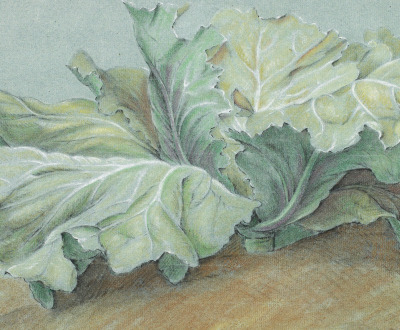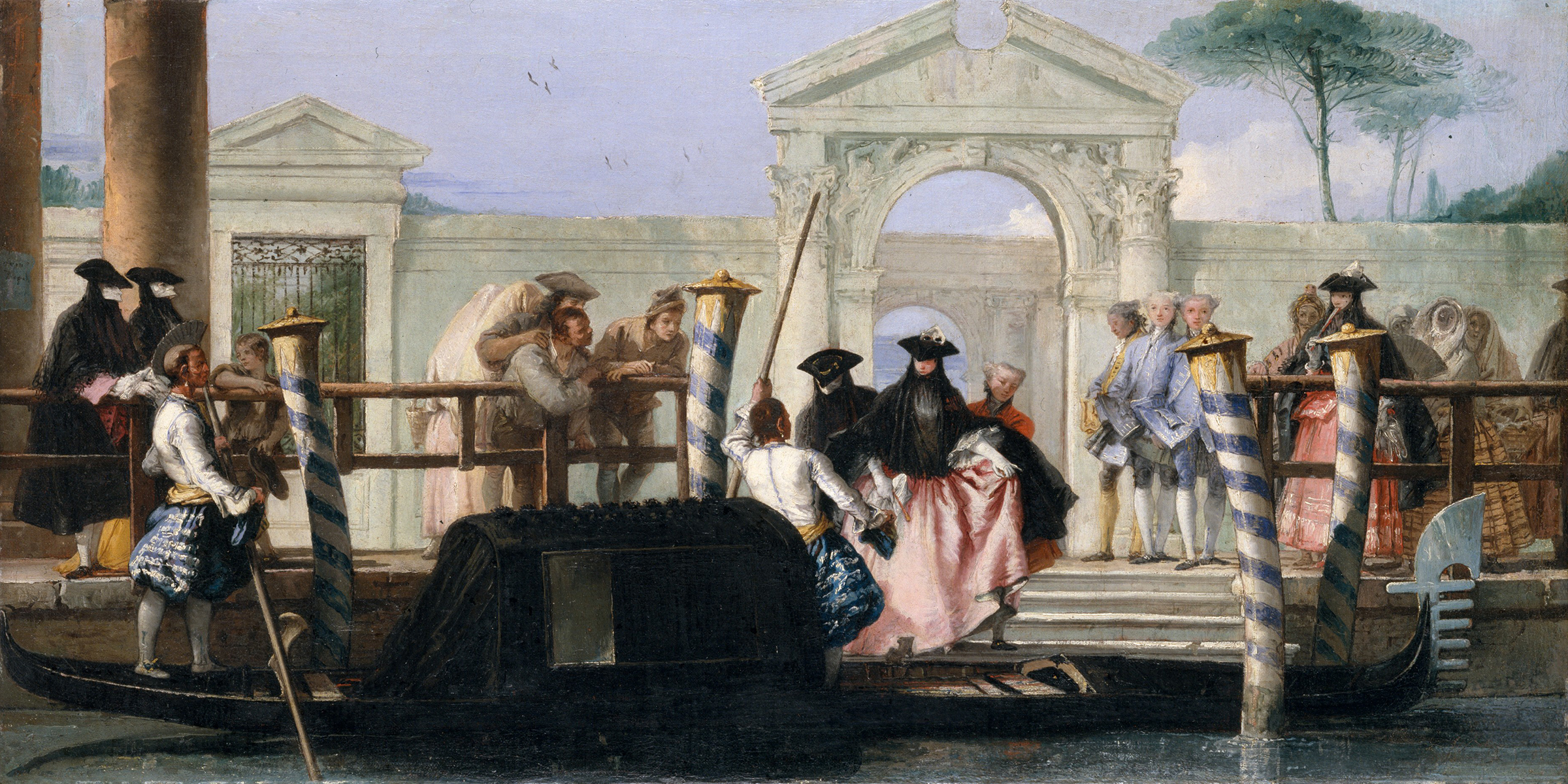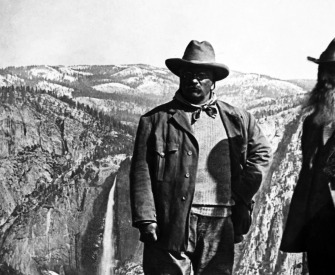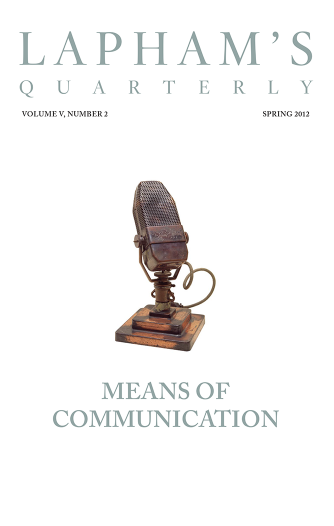History is a people’s memory, and without a memory man is demoted to the level of the lower animals.
—Malcolm X, 1964
Cabbage plant, nineteenth century. Minneapolis Institute of Art, The Minnich Collection, The Ethel Morrison Van Derlip Fund.
Sometime around the late eighteenth century, the French botanist René-Louiche Desfontaines took a plant on an outing around Paris in a horse-drawn carriage. At the time, botany was just emerging as an independent science separate from medicine and herbalism. Desfontaines, who’d been elected to the Académie des Sciences at the age of thirty-three and appointed professor of botany at the Jardin des Plantes a few years later, was a leading practitioner in the new field. Only a few decades before, Carl Linnaeus had sparked a fever for botanical knowledge with his revolutionary approach to classifying and naming species. The Linnaean system offered a rational way to understand nature and creation, and the educated elite readily embraced it. Up to five hundred Parisian botanophiles (as the new plant lovers were called) regularly turned out for Desfontaines’ thrice-weekly lectures at the Jardin, eager to learn more about his plant-collecting adventures in North Africa and the new species he’d carried home and was busy describing. Perhaps he told his audiences about his carriage experiment; it would have fit with botanists’ realization that plant sex was analogous to animal sex, something many laypeople found profoundly shocking. As it stands, Desfontaines left only a brief mention of this excursion in an obscure volume he wrote about the nature of French trees and shrubs.
From this account, we know that the plant he selected for the tour was one most of us call the sensitive plant or touch-me-not, Mimosa pudica. A member of the pea family, M. pudica is a small plant with tiny leaflets paired along the length of each stem and pretty lavender-pink globular flowers. The leaves give it a fernlike, feminine look, although it is also armed with thorns to ward off attacks. It’s native to Central and South America but has spread throughout the tropics partly because of its popularity as a novel ornamental that exhibits a fascinating behavior: if you touch a single leaf, the plant will swiftly fold up all its leaves before your eyes. Only a soft touch is required to bring on this collapse; after a while, you can also watch as the wilted-appearing mimosa sets about righting itself and reopening its leaves. You may have discovered the mimosa’s animal-like trick in an arboretum or store where the plants are sometimes displayed or sold. The rapid response to being touched is another defensive tactic—it startles most insects, as it does naive humans.
M. pudica and its curious actions were known to Western science even before 1753, when Linnaeus officially named the species. Many leading scientists of the day, including Robert Hooke (the English natural philosopher best known for being the first to see and describe a cell via a microscope) and later the French naturalist Jean-Baptiste Lamarck studied the plant. Lamarck was particularly struck by how mimosas eventually no longer respond to being repeatedly touched. He thought this was likely due to the plant running out of energy. But sometimes they stopped responding long before they depleted their stores. He couldn’t explain why they stopped until he learned of Desfontaines’ carriage experiment.
Mimosas, in addition to touch, also droop as soon as the sun sets, when they are bumped, when water droplets fall on them, or when a slight breeze stirs their leaves. So Desfontaines knew the jostling movement of the carriage would trigger the plant’s wilting response. He closely observed the mimosa and its reactions to the ride. At first, the plant responded exactly as expected: it folded its leaves and drooped. But as the bumpy ride continued, it began to reopen its leaves and stood tall again. Most surprisingly, he later wrote, the leaves “remain open despite the agitation they continue to experience, while any other strange disturbance, even a slight breath of air, makes it move and close its foliage.” Desfontaines concluded, as did Lamarck upon learning of the experiment, that the plant had become “accustomed” to the sensation of the carriage. How could a plant do such a thing?
For close to 2,400 years, the Aristotelian world order largely shaped our approach to the biological sciences. The philosopher and naturalist wrote five works devoted to the topic of animals (but none to plants), yet it was a sixth work, On the Soul, that proved to be the most influential for biology. In it he devised a system for classifying plants, animals, and humans based on the type of soul each one possessed:
Of the soul’s powers, namely, those of nutrition, desire, sensation, locomotion, and thinking, some living things possess all, others some, and others only one. Plants possess the power of nutrition only, other living things possess this and also the power of sensation…Others, i.e., men…possess also the power of thinking and an intellect.
To Aristotle, plants (which have nutritive souls) were just barely alive—an attitude that has endured. Most of us regard plants as organisms slightly above rocks; they are things as incapable of thought or feeling as they are of movement. Their green world serves as a kind of comforting backdrop to the real-world activities of animals (sentient souls) and humans (rational souls). Because they are insensate, stuck, and unable to speak, plants are easy to ignore; mostly, we use and abuse them.

Rosette inscribed with the names and titles of Mughal emperor Shah Jahan, folio from the Shah Jahan Album, c. 1645. The Metropolitan Museum of Art, Purchase, Rogers Fund and The Kevorkian Foundation Gift, 1955
Aristotle’s strict divisions held up through the late nineteenth century and into the early twentieth century. Yet fast-moving plants like the mimosa and the insectivorous Venus flytrap provoked debates, and scientists like Desfontaines, Hooke, and Lamarck had to devise explanations for their unusual behaviors. The mimosa plant in particular found its way into numerous scientific works, although most authors usually argued against the idea that the plant had any power of sensation (the principal division Aristotle had established between plants and animals). The mimosa makes an appearance in Hooke’s 1665 treatise Micrographia (the first book to illustrate plants and insects as seen through a microscope) as well as John Locke’s 1689 Essay Concerning Human Understanding, among other works. According to Locke,
This faculty of perception seems to me to be that which puts the distinction betwixt the animal kingdom and the inferior parts of nature. For, however vegetables have, many of them, some degrees of motion, and upon the different application of other bodies to them, do very briskly alter their figures and motions, and so have obtained the name of sensitive plants, from a motion which has some resemblance to that which in animals follows upon sensation: yet I suppose it is all bare mechanism; and no otherwise produced than the…shortening of a rope by the affusion of water.
While scientists puzzled over how a plant lacking nerves and muscle could briskly move, many poets of the era, equally captivated by M. pudica, were less shy in ascribing to it feelings and perception. They seized on it as a romantic symbol of a sensitive soul, an emblem of a unifying life force. In his Solomon on the Vanity of the World (1718), the British poet Matthew Prior struggled to understand how this small plant could break the Aristotelian world order:
Whence does it happen that the plant which well
We name the sensitive should move and feel?
Whence know her leaves to answer her command,
And with quick horror fly the neighb’ring hand?
Meanwhile, in William Cowper’s “The Poet, the Oyster, and Sensitive Plant,” published in 1782, the mimosa speaks about the uneasiness its movements cause:
Many a grave and learned clerk,
And many a gay unletter’d spark,
With curious touch examines me,
If I can feel as well as he;
And, when I bend, retire, and shrink,
Says—Well, ’tis more than one would think!
The little plant had poets, philosophers, and scientists fretting over a fundamental question: Where should the line be drawn between one form of life and another? Aristotle’s solution no longer fit. It was discomfiting to find the natural order overturned—and by a plant. For the poets, though, the disruption was inspiring. If life could or would not be simply compartmentalized, then perhaps it made more sense to search for a mystical force that blurred divisions and unified all of life—something the mimosa best exemplified.
Stefano Mancuso, who directs the International Laboratory of Plant Neurobiology at the University of Florence, knew that most of us (including most scientists) had never heard of Desfontaines’ mimosa study. But he liked the test’s simplicity and decided to replicate it. In 2013 he recruited an ecologist, Monica Gagliano, to join his lab, and she set about devising a way to “remake” the original experiment, minus the carriage ride.
Testing animals to see if they can get used to something—usually the presence of humans—is a thing behavioral ecologists regularly do. It’s what every primatologist and every elephant, cetacean, and wolf watcher initially must do: attempt to make the animals used to them, although scientists use the term habituate. Once the animals have learned there is no danger from these people, hopefully they will then go about their lives as if the scientists were not there. Could the mimosas learn something similar?
To fully appreciate the mimosa’s dilemma when faced with a new threat, it’s important to remember that plants feed on light. When a mimosa folds up its leaves in daylight, its light-foraging ability is cut nearly in half. The instinctive response may save the plant’s life if it is really under attack. But what if the instinct is wrong about the threat? If the plant closes its leaves for too long, it faces another danger: starvation.
He who is afraid of his own memories is cowardly, really cowardly.
—Elias Canetti, 1954For her experiment Gagliano planted seventy-two mimosas, each about three inches tall, in small individual containers. She kept half of her plants in low light conditions and the others in high light conditions. To imitate the up-and-down movement of the carriage ride, she devised a “controlled drop” by attaching a sliding cup to a vertical steel rail. The plan was to place each plant inside the cup and then release the cup so that it slid fifteen centimeters down the length of the rail to a foam cushion. The speed would be fast enough to “scare” her plants but wouldn’t harm them. Each mimosa would get the drop treatment.
On the morning of October 3, 2011, Gagliano started her experiment. She dropped sixteen of the plants (eight from the low-light group and eight from the high-light group) one at a time. Instantly, each plant folded its leaves, demonstrating that they considered the drop a threat; that was their instinctive response. But they apparently learned nothing from that first sudden, although harmless, fall, because they responded exactly the same way later in the day when Gagliano dropped them again. “Such a fleeting and limited experience offered no opportunities for evaluating whether the nuisance was or wasn’t a threat to survival,” Gagliano later wrote. “So nothing to learn, nothing to remember.”
What would happen if mimosas experienced more drops? Gagliano administered the same test to fifty-six plants from both light groups. But this time she dropped each mimosa sixty times at either five- or ten-second intervals—seven times throughout the day. “Remarkably, the initial four to six drops was all they needed to suss out the situation,” Gagliano wrote. The plants had closed up their leaves during the first few drops but quickly began reopening them as the test progressed. By the end of the first training session, they didn’t bother to close at all. Unsurprisingly, the plants kept in low light were the fastest to decide that the drop wasn’t dangerous. They reopened their leaves more quickly and fully than did their high-light counterparts—their need for more light, and thus food, apparently outweighed the potential harm from being dropped.
Or perhaps all the plants were simply tired from the experiment and unable to keep their leaves closed?
Memory is necessary for all operations of reasoning.
—Blaise Pascal, 1658Answering that question required a subsequent test. This time Gagliano placed the plants into a tight-fitting foam container attached to a vibrating plate. One by one, she gently shook each mimosa for five seconds. This test provided the plants another mechanical sensation, albeit slightly different from the drop. Gagliano expected them to respond as they had at first to the original test: they would close their leaves—unless, of course, they were simply too fatigued to do so. However, every plant folded up its leaves. They were not at all tired, but instead quite capable of detecting and responding appropriately to this new, possibly threatening stimulus.
The fifty-six mimosas had to endure one more test that day. Gagliano placed each plant inside the drop cup again and subjected it to one additional vertical fall. If they had truly learned from their previous experience that the drop wasn’t dangerous, they would ignore this renewed threat, despite the longer interval. And they did. Indeed, they passed the test “with flying colors,” she later wrote. “As in a gesture of triumph, they all stood proud and tall and kept their leaves wide open the entire distance.”
It seemed that they’d learned the drop experience wasn’t harmful and had even formed a memory they could recall about it. How sturdy was that memory? Gagliano let her mimosas rest for three days and then put them through another bout of drops. Again they passed. “Like seasoned little base jumpers, these plants continued to disregard the drop as they had learned to do during their training, and by ignoring it now, they were showing me they could remember the drop flawlessly,” she wrote. “They had the faculty of memory, and their behavior was not hardwired in DNA, but learned.” A month later, the mimosas still remembered that the drop wasn’t a threat.
The mimosa study, while a milestone, wasn’t the first to question the strict division between plants and animals. In the latter part of his life, as controversy mounted after the 1859 publication of On the Origin of Species, Charles Darwin increasingly turned his attention to botany. An avid gardener (and regular contributor to Gardeners’ Chronicle), he considered his research into plants to be a pleasant diversion from more weighty pursuits. By 1873 he was aided in these endeavors by his son Francis, and the two began to devise experiments that would eventually challenge the notion that plants lacked the ability to move. They kept track of the growth of tendrils on various climbing and twining plants, measuring how far they reached in their efforts to clasp a pole—showing that, although painfully slow, their plants were moving. The two men also investigated the jawlike clamping structures of insectivorous plants, the movements that occur as seeds germinate, and the highly sensitive nature of plant roots.

The Departure of the Gondola, by Giovanni Domenico Tiepolo, c. 1765. The Metropolitan Museum of Art, Bequest of Mrs. Charles Wrightsman, 2019.
The Darwins were particularly intrigued by what they called the “radical”—or apex, the point where a plant’s root and stem join—and roots’ abilities to sense light, gravity, pressure, moisture, and nutrients to determine how and where to grow. “It is hardly an exaggeration to say,” Darwin wrote at the end of his 1880 study The Power of Movement in Plants, “that the tip of the radical thus endowed, and having the power of directing the movements of the adjoining parts, acts like the brain of one of the lower animals, the brain being seated within the anterior end of the body, receiving impressions from the sense organs and directing the several movements.” Thus to Darwin a plant was basically an inverted animal, with its brains on the bottom, growing in the dark, while its sexual organs were on top, waving about in the sun.
The idea of “plant memory” has taken much longer to develop, but few scientists today—perhaps none—currently oppose it. Since the 1980s researchers have discovered that certain plants remember experiences of drought, salinity, extreme temperature variations, diseases, and herbivore attacks. To survive, plants can change their anatomy (for instance, via the dieback of peripheral parts) and metabolism. If the scientists subject the plants to the same experience, the plants react even more strongly. Tobacco plants, for instance, accumulate pools of nicotine in their cells if insects are feasting on their leaves. Each toxic pool serves as a “stress memory,” the researchers investigating the plants say, and protects the plants against future attacks; insects that take a bite of the primed cells are poisoned.
Scientists have also shown that spring annuals and biennials adapt to winter’s cold and only flower when conditions are favorable in the spring thanks to a “cycle of cold memorization.” An individual pansy may remember a chilly winter, but its seeds or tissues lose these memories, so that the next generation starts fresh, ensuring that any offspring grow and develop normally.
But where in plants do memories reside, and how are they formed? That’s the next major question scientists are now working to answer. Intriguingly, scientists have discovered that memories, or “stress imprints,” in plants involve calcium channels as well as the stress hormone abscisic acid, epigenetic regulation, and transcriptional priming—basically, the same mechanisms and chemicals animals use to form memories. Indeed, the calcium-signaling network in plant cells is markedly “similar to those underlying memory processes in animals,” Gagliano reported in her mimosa paper. Perhaps calcium plus electrical impulses “culminate in the formation of memories and expression of the most remarkable behaviors in animals…and plants alike.”
Of course, it could still be the case, given the limited scientific research to date, that not all plants have memory; that, too, is something scientists are investigating. However, it’s likely that many do, simply because memory—like smell, taste, sight, sensation, and hearing (the five basic senses, which some scientists now say plants also have)—is such a useful thing to have. After all, the challenges that every living organism face are the same: finding a suitable habitat and enough to eat, and surviving long enough to reproduce and ensure our offspring’s survival. The apparent solution for all of these would be to develop the ability to remember the good and bad moments, and to draw on these memories to help overcome future pitfalls. There’s something reassuring about living among beings that, as a consequence of shared origins, use similar mechanisms to solve life’s basic problems. Whether nutritive, sentient, or rational soul, memories just might rise up in us all—lessons learned—returning again and again to protect us from the vagaries of life.




